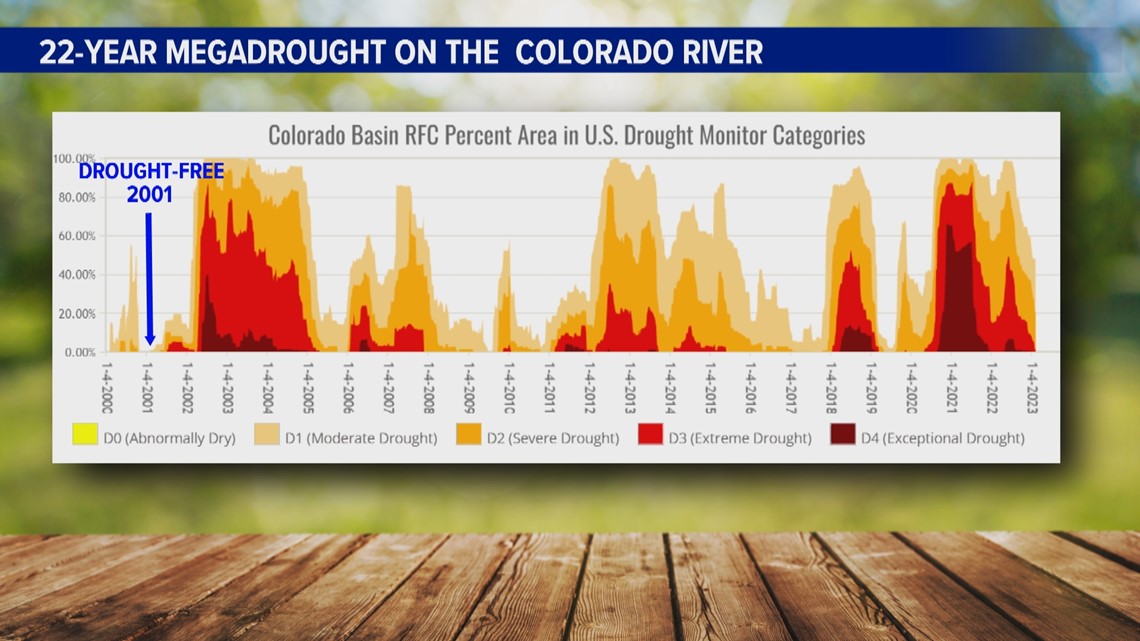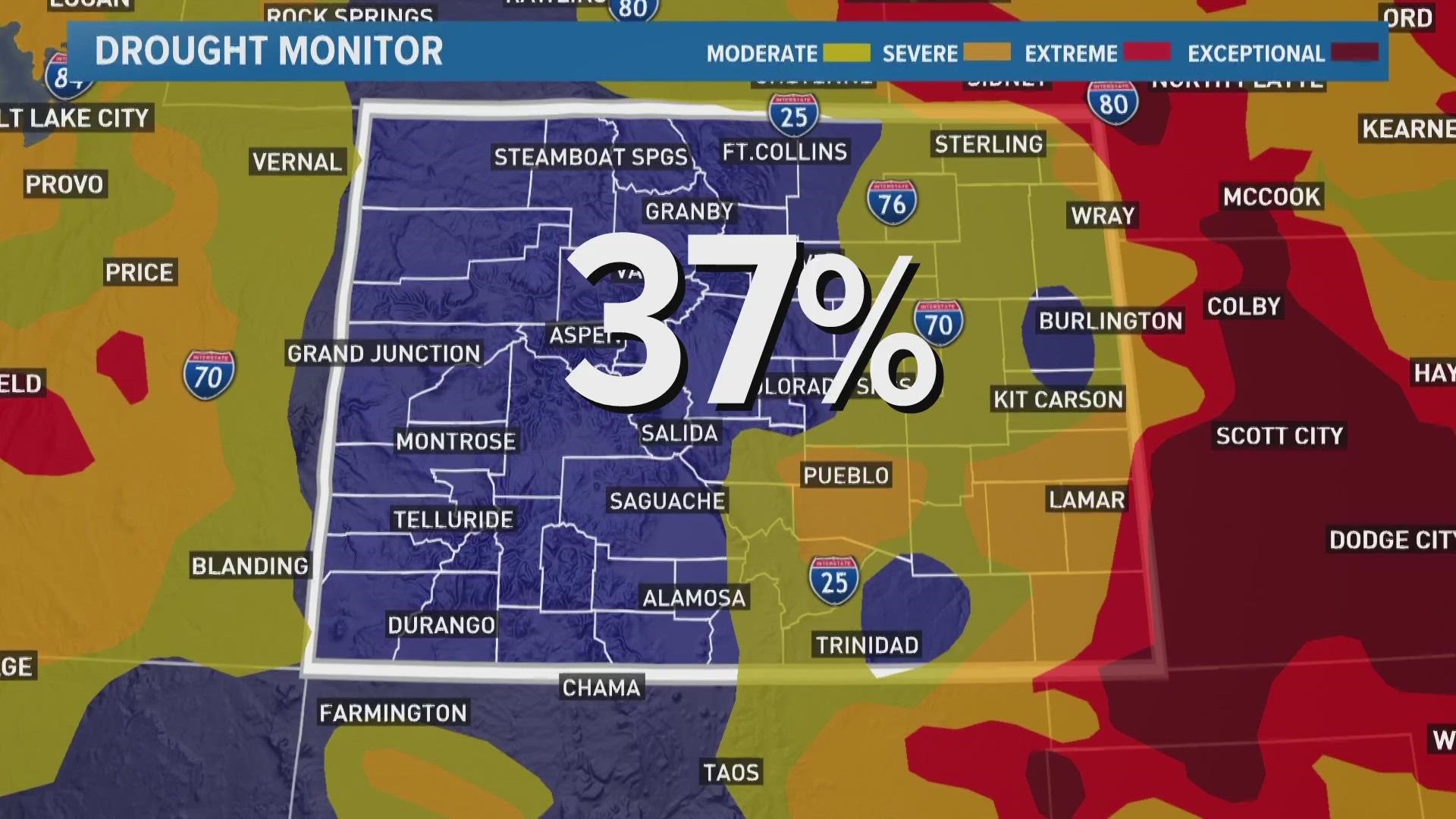FORT COLLINS, Colo. — Climatologists are talking about a big snow year and the continuation of a megadrought all in the same breath. It seems counterintuitive, but the reason for that is in time and space.
It often takes as long to get out of a drought as it takes for one to develop. It's a process that encompasses more than just a single year. So it normally takes several big snow years to erase a drought that took several years to develop.
It can also be tough for most people to gauge the presence of a long-lasting drought when the small space they live in, like a town or a state, is having a snowy winter.
But the 22-year megadrought that climatologists talk about, is happening in a bigger space.
For instance, only 37% of Colorado was listed in drought conditions in the latest update, issued Feb. 16. It’s unlikely that it will go all the way down to zero this year, but that has happened in Colorado nine times since the Drought Monitor was developed 23 years ago.
Those drought-free spells were short-lived, however. Colorado last hit zero drought on May 21, 2019. That lasted until Aug. 27 -- just 98 days.


But if you look at the Colorado River Basin as a whole, which includes six other Western states, there’s still 48% drought despite a very snowy winter.
The last time that entire river basin was 100% drought-free was in February 2001. That’s 22 consecutive years of drought.


“Some people are calling it a megadrought. Some people are calling it aridification, but it is this idea that perhaps we are shifting to a new normal,” said assistant state climatologist Becky Bolinger.
She said that drought has become such a persistent part of the landscape in the West, that there’s been some discussion among drought experts to redefine drought. The problem is, the climate is changing too fast
“Drought is supposed to be what’s significantly different from normal," Bolinger said. "And I don’t know if we know what that normal is yet to be able to define what’s significantly different.”
She said that even if a new normal could be defined, that doesn’t change the amount of water required to grow crops, so changing the thresholds of drought may hurt agriculture more.
“It’s a really important tool for the USDA," she said. "Defining drought and providing aid to farmers. You change that tool and say, well now that this is normal, you’re not in a drought anymore.”
She said that could reduce the amount of federal aid and other relief to drought-stricken areas.
At the same time, if drought definitions remain the same, it looks unlikely that the drought will ever be completely erased again.
SUGGESTED VIDEOS: Colorado Climate

